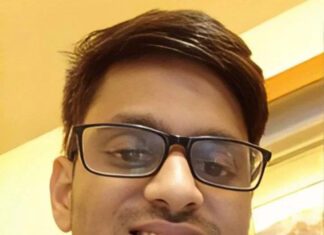Yacine is the one of the authors of A Definitive Guide to Apache ShardingSphere. We got the chance to sit down with him and find out more about her experience of writing with Packt.
Q. What is/are your specialist tech area(s)?
Yacine: Data analytics, databases, big data, open source.
Q: How did you become an author for Packt? Tell us about your journey. What was your motivation for writing this book?
Yacine: I became an author for Packt thanks to the ShardingSphere community, and my newly found passion for open source.
I became an open source contributor thanks to the Apache ShardingSphere community and discovered a whole new world made of exciting communities and outstanding people.
The motivation came as I believe ShardingSphere is a very strong project, and I am looking to support it with community-building efforts. The strength of the project is demonstrated by the fact that multiple multi-billion corporations use it regularly to handle sensitive data in Asia. Nevertheless, word of mouth is not enough, and this book came as the perfect opportunity to be able to educate communities all over the world about ShardingSphere.
Q: What kind of research did you do, and how long did you spend researching before beginning the book?
Yacine: As “core” contributors to the Apache ShardingSphere project, we did not need to a lot in terms of technical research.
I focused on researching what are the current shortcomings of the available resources on ShardingSphere, and how this book integrate and improve them.
One more thing I thought we should focus on, was delivering a comprehensive overview of the big data and database industry’s current challenges, and most likely future developments
Q: Did you face any challenges during the writing process? How did you overcome them?
Yacine: Personally, writing this book meant scheduling challenges. I personally was completing a PhD dissertation and an academic journal publication at the same time – while working full time as well.
Another significant challenge was collaboration. Making things work between multiple authors has proven to be somewhat difficult.
To overcome both challenges, it took some scheduling management.
Q. What’s your take on the technologies discussed in the book? Where do you see these technologies heading in the future?
Yacine: I find the technologies discussed in the book to be innovative, and a little underrated. There is a lot of buzz around artificial intelligence and machine learning, while databases do not get enough credit.
Most people do not realize that actually databases are the foundation of these technologies.
I hope that the content of this book and the efforts we’re making at the Apache ShardingSphere community can help bring some attention to database tech.
Q: Why should readers choose this book over others already on the market? How would you differentiate your book from its competition?
Yacine: This book is the most complete reference on ShardingSphere out there.
Even if expand the comparison scope, this book proves to be useful to a wide range of people. Both beginners and advanced learners can choose this book to learn about databases.
Readers that are not familiar with ShardingSphere, but are interested in data science, databases, and big data will also find this book to be useful. We tried to maintain a balance between making it useful to advanced users, while also remaining beginner-friendly.
Q: What advice would you give to readers learning tech? Do you have any top tips?
Yacine: Learn by doing. That would be the number one piece of advice.
Do not be intimidated by early difficulties, and try to apply the knowledge you pick up in a practical setting.
Also, I can’t recommend open source communities enough. If you check my profile, you will see that I am not an engineer, but thanks to open source, I have expanded my skillset and picked up a thing or two.
Q: Can you share any blogs, websites and forums to help readers gain a holistic view of the tech they are learning?
Yacine: I suggest the ShardingSphere official Medium account, or also opensource.com, Dev.to and InfoQ.
Q. What are the key takeaways you want readers to come away from the book with?
Yacine: I want readers to come away with a thorough understanding of Apache ShardingSphere, and how they can both simplify and enhance their database system; and also a renewed interest for open source.
Q. Do you have a blog that readers can follow?
Yacine: I do not have a personal blog, but I do write contribution pieces for websites such as DZone, the official ShardingSphere Medium, etc.
Q. How would you describe your author journey with Packt? Would you recommend Packt to aspiring authors?
Yacine: Yes, I would recommend Packt to aspiring authors. I appreciated the hands on approach of the editorial team.
Q. What are your favorite tech journals? How do you keep yourself up to date on tech?
Yacine: Regarding academic journals, I don’t have a favorite. Magazines, websites etc. I use InfoQ, Stack Overflow, Reddit, InfoWorld, Endgadget, Gizmodo etc.
Q. Do you belong to any tech community groups?
Yacine: Yes, multiple on different platforms including GitHub, Slack, WeChat, LinkedIn, hashnode, dev.to, etc
Q. How did you organize, plan, and prioritize your work and write the book?
Yacine: With a scheduling sheet shared on Google with the editorial team, and a weekly call every Thursday.
Q. What is that one writing tip that you found most crucial and would like to share with aspiring authors?
Yacine: Structure. Try to find the structure/schedule that best works for you, and try be consistent and stick to it.
Some days you’ll write lots, some others you won’t. Some days you’ll be inspired, some other days you’ll hate what you wrote.
The important is to stick to it, you can always revise later.
Q. Would you like to share your social handles? If so, please share.
Yacine: http://www.linkedin.com/in/yacinesitayeb
You can find Yacine’s book on Amazon by following this link: Please click here.









